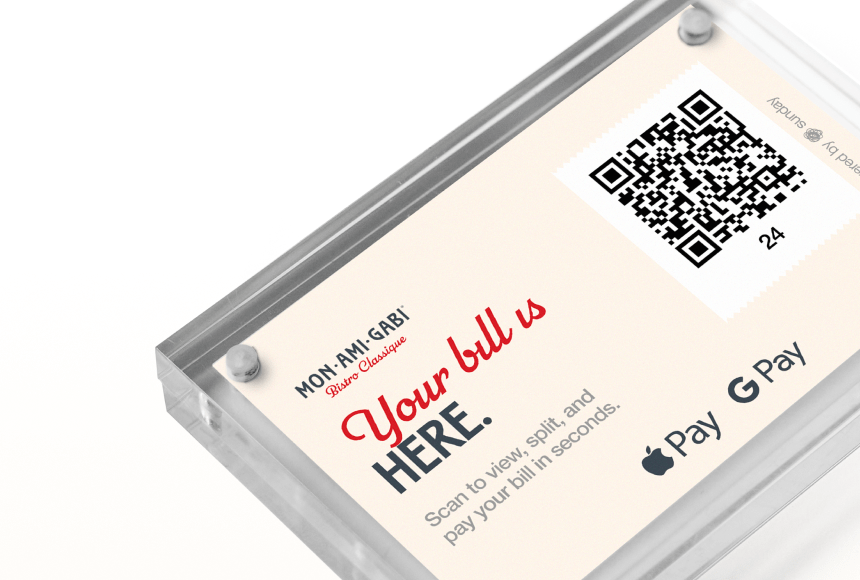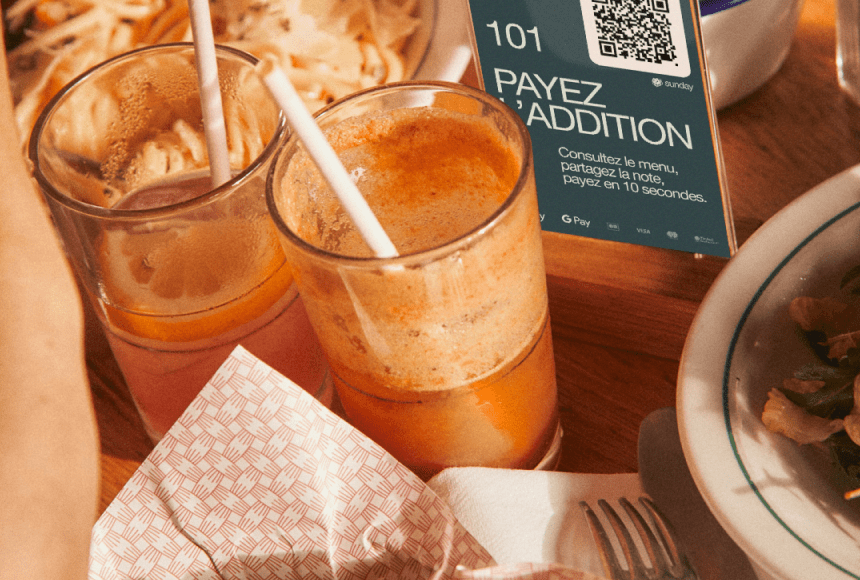
Seven Overlooked Reasons Your Service Is Slow—and How to Turn Things Around
Are Your Guests Wondering What’s Taking So Long?
Imagine this scene: You run a cozy, bustling bistro on a Saturday night. Your staff is bustling between tables, and regulars are seated alongside excited visitors. But the evening’s momentum starts to slip. Guests wait too long for their drinks, and appetizer orders back up. Your line cook seems swamped, and the front-of-house team is juggling more tasks than they can handle. Suddenly, the dining room buzz morphs into an undercurrent of frustration. Before you know it, a table cancels their dessert order and asks for the check—without leaving a tip. Where did things go wrong?
Service delays are a common pain point for restaurant owners across the country. Whether you run a gourmet dining room or a fast-casual eatery, you’ve likely wrestled with these frustrations. Slow service doesn’t just hurt your customers’ experience; it also eats into your bottom line, affects staff morale, and reduces tips. Let’s dig into some common but often overlooked culprits behind service delays, and explore concrete ways you can fix them—without losing your warm, personal touch.
The Hidden Costs of Delays
According to data from the National Restaurant Association (source), about half of diners say that long wait times or slow service is their biggest complaint. When your servers are behind schedule and your kitchen is struggling to catch up, you risk:
- Negative online reviews that stay visible indefinitely.
- Fewer repeat visits, because unhappy diners rarely come back.
- Strained staff, leading to higher turnover.
- Lower tips, impacting staff satisfaction and retention.
The good news? Most of these problems have practical fixes. By focusing on these seven overlooked causes, you can shave valuable minutes off each step of the guest experience, creating a smoother cycle from seat to check.
1. Unclear Table Management
New guests arrive, but the host doesn’t know which tables are free. This scenario can back up your entire service cycle before it’s begun. And if someone accidentally seats a guest at a table that’s not quite ready, you’re already on the road to a slow, clumsy motto for the evening.
How to Fix It:
- Implement a Digital Seating Chart: An efficient system (like a digital point-of-sale platform that tracks table availability) reduces guesswork and eliminates confusion. The host can see instantly which tables are occupied, reserved, or ready to seat.
- Communicate With the Floor Team: Decide on a simple, universal signal that a table is clean and ready. For instance, a radio or messaging app that the busser can use to inform the host.
- Plan the Flow: If you know the biggest rush hits at 7:00 p.m., staff up and stage break times either earlier or later so you don’t have a host or busser missing in action during the peak.
2. Disorganized Workflow in the Kitchen
Meals can be perfectly plated, but if kitchen stations aren’t in sync, you’ll see chaotic ticket queues and delayed order fulfillment. Bottlenecks often happen when certain stations overload while others are underutilized.
How to Fix It:
- Divide Responsibilities Clearly: In many smaller restaurants, cooks jump between stations. Whenever possible, assign each person to a dedicated station—grill, sauté, salad, dessert—so they can be accountable for that area.
- Leverage Prep Sheets: A clear prep sheet with duties assigned to each worker not only streamlines the cooking process but also cuts down on mid-service confusion. This approach helps your team quickly see what’s stocked and what needs restocking.
- Use Line Checks Every Shift: Have the chef or shift lead check all stations before service. Are utensils, products, and backup items ready? Minimizing emergencies in the heat of the moment removes major slowdowns.
3. Undertrained (or Overwhelmed) Staff
Even the best-run kitchen can’t make up for a shaky front-of-house team. If your servers aren’t confident about the menu, or if hosts and bussers don’t understand their roles, confusion reigns—and your service times suffer.
Staff shortages continue to be an issue in many parts of the US restaurant industry. So when you do have a capable team member, you want to retain them. Overworking leads to burnout, errors, and eventually turnover.
How to Fix It:
- Comprehensive Onboarding: Don’t just show your new hires where the menu is—walk them through it. Let them taste the items, watch how the kitchen prepares them, and get interactive training so they feel empowered to answer questions.
- Cross-Training: Experienced servers can help train new hosts, and vice versa. This fosters team synergy and ensures that if someone calls in sick, the rest can quickly step in.
- Monitor Workloads: If your servers are stretched too thin, they’ll struggle to greet new guests, run food, refill drinks, handle payments, and bus tables simultaneously. Try to keep a balance, especially during peak hours, so no single person is on the verge of burnout.
4. Confusing Menu Design
If your menu is cluttered or unclear, guests spend extra time deciding on their order. This delay adds up across multiple tables. Even worse, confusion can lead to more questions for your servers, slowing them down as they juggle multiple tables.
How to Fix It:
- Group Items Logically: Organize by categories—appetizers, salads, entrées—while featuring specials or new items in a distinct, easy-to-spot section.
- Use Clear, Simple Descriptions: Instead of extensive culinary jargon, provide succinct descriptions. Guests who want more details will ask. This keeps the menu from becoming an obstacle course.
- Highlight Your Best Sellers: By guiding guests toward items you know you can turn out quickly and consistently, you help them order with confidence and keep the kitchen workflow stable.
5. Inadequate Payment Systems
How often have you seen a server sprinting across the dining room to grab a bulky payment terminal before the impatient customers walk out the door? Clunky procedures for handling checks, processing payments, and finalizing tips can add precious minutes to each transaction. Multiply that by several tables, and your entire rotation slows to a crawl.
How to Fix It:
- Mobile Payment Options: Instead of tying up the payment process at a single checkout station, equip servers with devices that can take contactless payments at the table. This approach also allows your staff to accept tips instantly.
- QR Code Payments: A streamlined solution like sunday—which lets customers scan a QR code to pay—trims wait times for checks and frees your servers to handle other tasks. Guests can even leave tips and post Google reviews in a matter of seconds.
- Prompt Bill Delivery: Train servers to deliver the check at an optimal moment, such as when all the entrées have been cleared or when customers are nearly finished. Don’t let them wait a full ten minutes trying to flag someone down.
When your payment process is easy and secure, it improves both the guest experience and the server’s efficiency.
6. Weak Communication Between Front and Back of the House
Front-of-house might promise a table side flambé or a dish modification without adequately notifying the back-of-house. Meanwhile, the chef might have run out of a key ingredient, but the servers only find out under the pressure of a busy rush.
How to Fix It:
- Use Tech Tools for Orders: A robust system ensures the kitchen sees the order—and any changes—immediately. Some platforms even allow real-time inventory updates to prevent the dreaded “we ran out of salmon” fiasco.
- Hold Mini Briefings: A quick pre-shift huddle can cover menu changes, large reservations, special requests, and staff updates. That way, nobody is caught off guard when they see ten tickets for the same complicated entrée.
- Encourage Ongoing Dialogue: Create an environment where line cooks and servers feel free to communicate about timing. If the kitchen is momentarily slammed, servers can hold off on firing the next course and keep the guests in the loop with a friendly explanation.
7. Missing Feedback Loops
Ever wonder why certain delays keep repeating themselves night after night? Without an established feedback system, you won’t know what problems your staff, or even your customers, are encountering. Servers might mention repeated issues, but if there’s no formal process to capture and address them, nothing changes.
How to Fix It:
- Regular Staff Meetings: Schedule a short session once a week to talk about any recurring holdups. Is the ticket printer too slow? Are online orders printed in the same place as in-person tickets, causing confusion? Make adjustments where needed.
- Open-Door Policy: Encourage your team to speak up. Maybe the sous-chef notices that your bottle opener keeps going missing at the bar, which adds 30 seconds each time someone tries to locate it. That kind of feedback helps you fix small but consistent bottlenecks.
- Guest Feedback Tools: If you allow customers to leave quick feedback via QR code, you can sometimes catch emerging issues early. Perhaps more guests are waiting too long for drinks. You’ll know to staff your bar better before it becomes a crisis.
Here’s How to Get Started
Organized table management, streamlined menu design, skilled employees, and modern technology solutions can solve punctual pain points and improve the entire dining experience. While the solutions can vary depending on the size and type of your restaurant, even small adjustments can add up to big improvements in speed.
- Audit the Guest Journey: Start from the moment a customer searches your location online, walks in, gets seated, orders, and pays the check. Identify where each slowdown occurs, and tackle them in order of highest priority.
- Involve Your Team in Decision-Making: The folks on the floor every day have insights you won’t see from the office. Ask for their thoughts, trial new systems or routines in small steps to uncover what works best, and then scale up.
- Consider QR-Based Payment Solutions: Automating one of the most time-consuming steps—payment—can free up your servers and reduce wait times dramatically. Many restaurants find they can turn tables faster without sacrificing an excellent guest experience.
According to restaurant technology provider Toast (source), businesses that adopt digital solutions for ordering and payment often report reduced wait times and higher average ticket sizes. Think about the time saved if each table can settle their check in under a minute, with no confusion about splitting the bill or adding gratuity.
A Quick Case in Point
Consider a mid-sized Italian trattoria in Chicago, known for homemade pasta but also a line out the door most weekends. The owner decided to adopt mobile devices for order taking, guiding guests to an easy-scan QR code for payments instead of handling paper checks. They also introduced a brief pre-service huddle to align everyone: host, servers, busser, and chef.
Within the first three months of these changes, they saw:
| Metric | Before Changes | After Changes |
|---|---|---|
| Average Table Turnover Time | 1 hour 20 minutes | 1 hour 5 minutes |
| Weekly Guest Complaints | 6–8 | 1–2 |
| Online Review Rating | 4.2 stars | 4.6 stars |
Saving 15 minutes per table might not sound monumental, but for a busy weekend shift with 40 tables, that’s a difference of 10 hours saved in total table usage—enough to serve more guests, increase tip opportunities, and lighten the stress on your team.
Planning Your Next Steps
Many restaurant owners fear that new technology or revised workflows will disrupt the personal ambiance they’ve worked so hard to create. But in reality, making these changes often enhances guest hospitality: your team is more attentive, your kitchen is calmer, and your guests spend less time waiting (and wondering) when the next course or the final check will arrive.
And while there’s no universal formula that works for every food establishment, the principles remain consistent:
- Invest in Training: A well-trained team is the foundation of fast, friendly service. Prioritize ongoing education that covers both food knowledge and customer handling.
- Embrace Technology Appropriately: From streamlined POS systems to QR code payments, smart tech choices minimize tedious tasks and free up staff for genuine human interaction.
- Communicate Consistently: Good communication fosters a culture of efficiency and respect—front-of-house, back-of-house, and beyond.
With the right tools in place—especially solutions like sunday that simplify payments, tipping, and even encourage positive reviews—you can transform the stress of slow service into an opportunity for growth. By trimming those extra minutes and focusing on meaningful guest interactions, you build a restaurant experience that leaves your customers smiling and your employees proud to be part of the team.
Moving Forward with Confidence
Service delays don’t have to be the norm. Identify the biggest bottlenecks in your establishment, whether it’s table management, kitchen communication, or the final payment. Then put these straightforward fixes into action. Listen to your team, adapt as needed, and keep your restaurant’s unique character at the center of everything you do.
Because when your workflow runs like a well-choreographed dance—from the moment guests walk in to the moment they tap a QR code to pay—you deliver an experience that’s memorable for all the right reasons. In a competitive industry like ours, a little extra speed, warmth, and precision can go a long way toward standing out—and becoming the local favorite every diner wants to revisit.
Find out more today
Drop us your details below and we’ll reach out within the next 24h
Get the full, detailed picture.
sunday elevates your business with insightful data, instant feedback and precise analytics.




